Environmental Engineering Defined
What is environmental engineering? Do you pick up litter?” To which you probably know the answer to the second question is a definite “NO!!!”. However, you may not know the answer to the first question.
Encyclopedia
According to Britannica (https://www.britannica.com), “environmental engineering is the development of processes and infrastructure for the supply of water, the disposal of waste, and the control of pollution of all kinds.” These endeavours protect public health by preventing disease transmission, and they preserve the quality of the environment by averting the contamination and degradation of air, water, and land resources.
Wikipedia
According to Wikipedia (https://en.wikipedia.org), environmental engineering is “a professional engineering discipline that takes from broad scientific topics like chemistry, biology, ecology, geology, hydraulics, hydrology, microbiology, and mathematics to create solutions that will protect and also improve the health of living organisms and improve the quality of the environment.” This definition is very similar to the one above. And note that both accurately define environmental engineering.
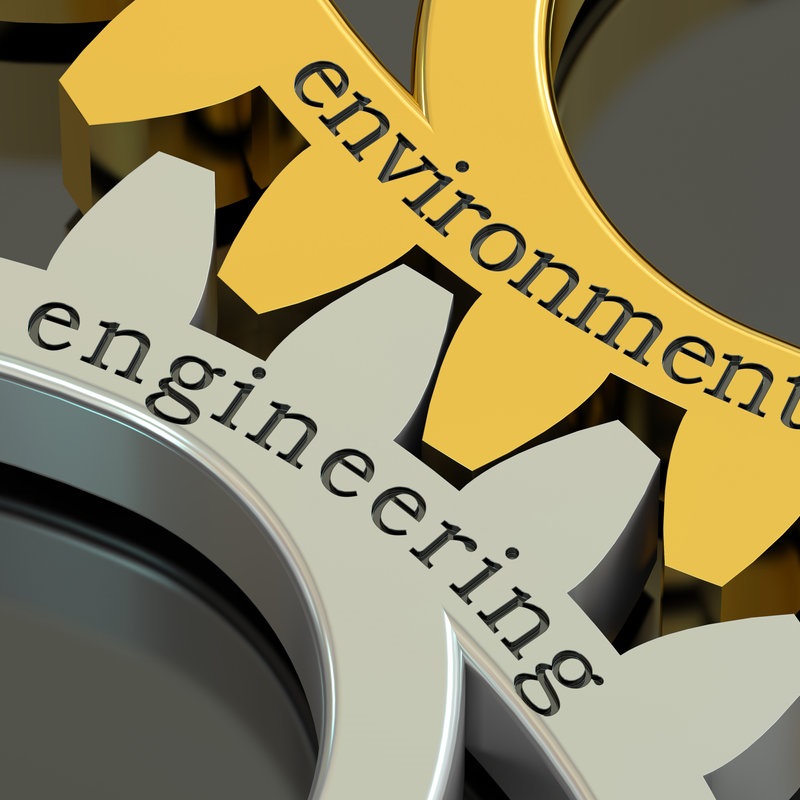
Environmental Engineering Evolution
Historically, sanitary civil engineers did environmental engineering like work. However, they be-came known as environmental engineers in the mid-1960’s with the recognition of pollution and the outcries to clean it up. As a result, scientists and engineers answered the call. Firstly, they addressed water pollution. Next, they turned to air pollution. Finally, they focused on land pollution. They followed three landmark federal laws: the Clean Water Act (1972), the Clean Air Act (1970), and the Comprehensive Environmental Response, Compensation, & Liability Act (1980). It is extremely impressive that the U.S. Congress passed these laws so quickly! And what they did was create the need for environmental regulations, permits, and agencies to accomplish the mission.
Agencies
Federal
Agencies, you ask? Firstly, let’s start at the top – the U.S. Environmental Protection Agency (https://www.epa.gov) came out of Reorganization Plan No. 3 calling for the establishment of that agency. That was an executive order which President Richard M. Nixon signed on July 9, 1970.
The EPA began operation on December 2, 1970. Wow, things seemed to move quickly fifty years ago!
State & Local
Once the EPA began publishing regulations to clean up the environment, they worked in cooperation with states to form departments or to use existing departments to implement the regulations. And so, state environmental departments formed to clean up the environment across each state. Cities and counties formed pollution control departments and divisions. Some health departments took on the responsibility.
EPA provided funding. States, counties, and cities needed it to comply. That was critical for projects such as new wastewater treatment plants. If the states did not enforce the environmental regulations, EPA would cut funding. And that meant jobs, worsening pollution, and outcries from the public. So there were many different incentives to comply.
Environmental Engineer’s Role
Formerly known as civil or sanitary engineers, environmental engineers came to the forefront. They assisted the various governmental agencies and the private sector with the environmental regulations.
Environmental Scientists
Environmental scientists and engineers began working together both in the government and private sectors. Their job? Ultimately, their job was to clean up the environment. Processes, equipment, and testing designs occurred in the areas of water, air, and land. And they are still at it today!

Conclusion
So there is a discussion of environmental engineering and what the environmental engineer’s role is! For further assistance, Environmental Safety Consultants (www.escflorida.com) is here. ESC holds a Florida environmental engineering license and has a Professional Engineer (P.E.) on staff. We have the credentials and experience to help you with your environmental engineering needs. We service Bradenton, Sarasota, St. Petersburg, Clearwater, Tampa, and Fort Myers. That includes Manatee, Pinellas, Hillsborough, Lee, and other counties from Pensacola (Escambia County) to Key West (Monroe County). So, Contact ESC and get a reply promptly!

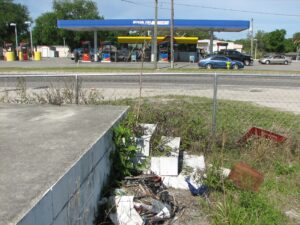 Let’s use the gas station example. A gas station today is not necessarily a gas station yesterday. In the 1950’s to mid-1970’s, a gas station was normally a full service station, not the convenience store that sells gasoline and diesel fuel today. Not only did they sell fuel from underground storage tanks, but they quite often dumped used oil, chlorinated carburetor cleaner, and other petroleum based wastes into a used underground storage tank. And, yes, those tanks leaked just like the fuel tanks. At the end of the day, they often hosed down the floor of the repair shop and squeegeed it out the door onto the pavement, grass, dirt, road, and storm drains. Oh, by the way, they also had hydraulic oil tanks underground for the lifts, which also leaked.
Let’s use the gas station example. A gas station today is not necessarily a gas station yesterday. In the 1950’s to mid-1970’s, a gas station was normally a full service station, not the convenience store that sells gasoline and diesel fuel today. Not only did they sell fuel from underground storage tanks, but they quite often dumped used oil, chlorinated carburetor cleaner, and other petroleum based wastes into a used underground storage tank. And, yes, those tanks leaked just like the fuel tanks. At the end of the day, they often hosed down the floor of the repair shop and squeegeed it out the door onto the pavement, grass, dirt, road, and storm drains. Oh, by the way, they also had hydraulic oil tanks underground for the lifts, which also leaked.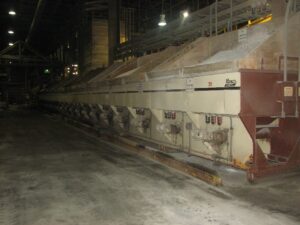 first and as a last resort personal protective equipment (PPE). Why is PPE considered a last resort? Because it is the last line of defense. If it fails, your workers may be ex-posed to hazardous airborne concentrations. Therefore, OSHA prefers that the hazard be eliminated or reduced to a level that is either nonhazardous or is as low as reasonably achievable.
first and as a last resort personal protective equipment (PPE). Why is PPE considered a last resort? Because it is the last line of defense. If it fails, your workers may be ex-posed to hazardous airborne concentrations. Therefore, OSHA prefers that the hazard be eliminated or reduced to a level that is either nonhazardous or is as low as reasonably achievable.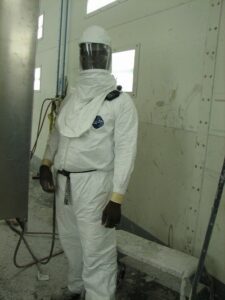 Assuming that you are in charge of Safety, you need to control the selection and must make sure that the players understand the objective. You want to be clear and concise. For example, you may advise the players that our objective is to determine if our painters applying the primer and finish coats are being overexposed to methylene chloride. They spray the paints off and on for a total of six hours during their eight hour shift five days a week. We have exhaust ventilation in the paint spray booths and they wear full facepiece air purifying respirators equipped with organic vapor filters piggybacked with particulate filters. Assuming the respirators have the proper protection factor, what are they exposed to if the respirator fails or they do not don it properly? We want to know what the airborne methylene chloride concentration is on an eight hour time weighted average (TWA) basis and on a fifteen to thirty minute short-term basis. Does it exceed the limits of OSHA (
Assuming that you are in charge of Safety, you need to control the selection and must make sure that the players understand the objective. You want to be clear and concise. For example, you may advise the players that our objective is to determine if our painters applying the primer and finish coats are being overexposed to methylene chloride. They spray the paints off and on for a total of six hours during their eight hour shift five days a week. We have exhaust ventilation in the paint spray booths and they wear full facepiece air purifying respirators equipped with organic vapor filters piggybacked with particulate filters. Assuming the respirators have the proper protection factor, what are they exposed to if the respirator fails or they do not don it properly? We want to know what the airborne methylene chloride concentration is on an eight hour time weighted average (TWA) basis and on a fifteen to thirty minute short-term basis. Does it exceed the limits of OSHA ( The specific industrial hygiene testing depends on the source of the hazard and the operation. In general, the first step is to define the objective of the testing. For example, the objective may be to determine if there is an oxygen deficient atmosphere in a chemical vat during a cleanout operation. Details are needed on the operation to establish the testing approach. For the vat example, the operation may involve two maintenance employees who clean out the vat during a four hour period once a week. The vat is emptied and dried out on Friday. On Monday, the two employees are lowered down into the vat after donning personal protective equipment. They use absorbent cleaning towels and an innocuous cleaner. The next step is to determine how the objective will be met.
The specific industrial hygiene testing depends on the source of the hazard and the operation. In general, the first step is to define the objective of the testing. For example, the objective may be to determine if there is an oxygen deficient atmosphere in a chemical vat during a cleanout operation. Details are needed on the operation to establish the testing approach. For the vat example, the operation may involve two maintenance employees who clean out the vat during a four hour period once a week. The vat is emptied and dried out on Friday. On Monday, the two employees are lowered down into the vat after donning personal protective equipment. They use absorbent cleaning towels and an innocuous cleaner. The next step is to determine how the objective will be met.
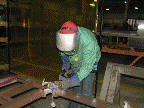 Another option for an operation that is established and being used is to monitor the complaints or adverse health conditions. Then those are compared to potential health impairments identified on the Safety Data Sheet. This may actually tell you what the constituent of most concern is. Take note that we are not recommending this approach since it can put workers at unacceptable risk. However, we have had enough years in the field that tell us processes are often established and used regularly without the proper evaluation.
Another option for an operation that is established and being used is to monitor the complaints or adverse health conditions. Then those are compared to potential health impairments identified on the Safety Data Sheet. This may actually tell you what the constituent of most concern is. Take note that we are not recommending this approach since it can put workers at unacceptable risk. However, we have had enough years in the field that tell us processes are often established and used regularly without the proper evaluation.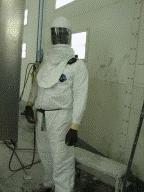 Let’s say the operation is spray painting a finished metal part before shipping. The part comes into the paint spray booth already deburred and sanded. It is ready to paint. The operation involves the following tasks:
Let’s say the operation is spray painting a finished metal part before shipping. The part comes into the paint spray booth already deburred and sanded. It is ready to paint. The operation involves the following tasks: The application of the term recognition in the industrial hygiene field is the identification of a hazard. It may be one that is obvious and you are familiar with or it may be hidden and unknown to you. An example of a known obvious hazard would be a dust cloud surrounding a worker dry sawing concrete. Most people would recognize the dust as being a potential respiratory hazard and many would take it a step further and recognize that the silica most likely in the dust can cause silicosis. On the other hand, a hidden hazard may be an oxygen deficient atmosphere in a confined space. You cannot see the oxygen deficiency and you may not be aware that it is a potential hazard. However, the atmosphere could result in asphyxiation and death.
The application of the term recognition in the industrial hygiene field is the identification of a hazard. It may be one that is obvious and you are familiar with or it may be hidden and unknown to you. An example of a known obvious hazard would be a dust cloud surrounding a worker dry sawing concrete. Most people would recognize the dust as being a potential respiratory hazard and many would take it a step further and recognize that the silica most likely in the dust can cause silicosis. On the other hand, a hidden hazard may be an oxygen deficient atmosphere in a confined space. You cannot see the oxygen deficiency and you may not be aware that it is a potential hazard. However, the atmosphere could result in asphyxiation and death.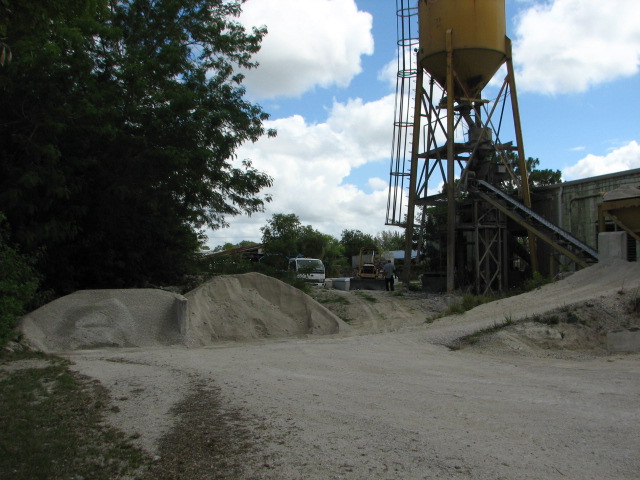 Many of the industrial hygiene hazards in construction are the same as in manufacturing. However, certain sources are more unique or prevalent due to the nature of construction. Examples are concrete installation, finishing, and removal; paver installation; remodeling and demolition involving lead based lead paint, asbestos containing materials, bird feces, mold, and bacteria; digging in soil; and painting.
Many of the industrial hygiene hazards in construction are the same as in manufacturing. However, certain sources are more unique or prevalent due to the nature of construction. Examples are concrete installation, finishing, and removal; paver installation; remodeling and demolition involving lead based lead paint, asbestos containing materials, bird feces, mold, and bacteria; digging in soil; and painting.